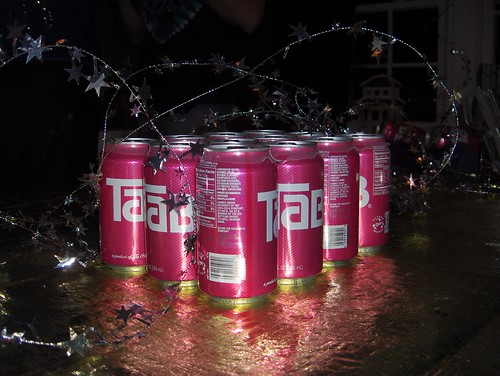Samsung today teased their upcoming Samsung GALAXY Tab tablet. The mention of “Tab” is forever in my own mind linked to my grade school gym teacher (it was her favorite snack, alongside jelly doughnuts). But hey, it’s better than yet another reference to “pads” or “slates” — bring back the tablet.
http://galaxytab.samsungmobile.com/
Side note: what is with North American Android device marketing? Apple sells phones that take pictures of your new baby. Android device makers and carriers prefer to sell phones that eat babies, and turn you into killer cyborgs. What gives? I prefer the Korean Android ads, which feature an adorable dancing rendition of the mascot.
More to the point, after a summer of cheap knockoff hacks running the Android OS, the Tab is likely the first “real” tablet for the Android platform. The presence of a 3G modem and OS 2.2 FroYo I think makes availability of Google’s official application conduit, the Android Market, more likely. And while you don’t need the Market or Google accounts to run an Android device, they make shelling out cash for one far more palatable. 3G modems would make these devices function, for the purposes of certification, essentially like a phone. My guess is you’d see them partly subsidized by carriers, though that could mean paying a monthly fee for mobile data and hold-ups related to carriers actually launching the thing. (According to the teaser, the Tab will hit on September 2 in Berlin, meaning you Germans could beat the US this time, unlike the reverse delay with the iPad.)
All of this means that in terms of hardware and software, the Tab could finally lead the charge of tablets built around a free software platform, in contrast to the iPad. Android isn’t a perfect free platform, but it still qualifies as “pretty darned good” in many respects. Instead of proprietary, closed-source APIs, a device like the Tab would mean open development, the ability of users to run what software they choose without having to hack their phone, a Linux kernel and Linux APIs, fully open-source platform code and sample apps, development on any OS (Windows and Linux, not just Max) with free, community-supported tools (like Eclipse), and development not bound by restrictive legal agreements. And, oh yeah, it’ll even run Processing.
My friend Brad Linder at netbook and tablet specialty site Liliputing breaks down the likely hardware specs. From leaked info:
The device appears to be running Google Android 2.2 with a custom keyboard. It seems to have a 7 inch, 1024 x 600 pixel display, which is a higher resolution screen than most 7 inch Android tablets have. The Samsung Galaxy Tab also reportedly has a 3.2MP webcam, as well as a front-facing QVGA camera. It also has 802.11b/g/n WiFi, 3G capabilities, and GPS. The 3G access gives me hope that the tablet will come with full access to the Google Android Market.
Yet another Samsung Galaxy Tab leak – photos
And via today’s official info:
According to the video, the tablet has a 7 inch display, runs Google Android 2.2, supports “video calls,” “full web browsing,” and “HD movies.” It also looks like it will use the same Swype keyboard available on the Samsung Galaxy S smartphone.
Samsung posts Galaxy Tab teaser, promises official launch September 2nd
Possibly missing, unfortunately, is proper digital video output and mirroring support outside bundled Samsung apps, though analog mirroring via TV out has been a feature of the Galaxy S. I’m still holding out for developer-accessible HDMI output or system-wide mirroring.
Update – maybe video output is coming? An upcoming Toshiba tablet sports HDMI. Of course, that still doesn’t necessarily mean that it won’t be limited to Toshiba apps. But here’s hoping that eventually Google bakes an API for everyone and convinces these makers to support it.
Tablets are naturally becoming an important part of the workflow of visualists, whether as development tools, ways of reading e-books, art objects, or control tools. In our recent platform survey, more Create Digital Motion readers owned and/or were interested in the iPad than their Create Digital Music counterparts, perhaps because of the visual nature of such devices. (Based on the numbers, which I’ll release soon, that wasn’t correlated with any greater Mac preference, either.) So the offerings for each of these platforms — including the maturation of OpenFrameworks‘ port for the iPad/iOS — I think will be an interesting one.
Here’s my smart money: expect smaller tablets catering to mobile networks this fall, followed by more full-functioned tablets in 2011 that also run standalone, with the latter split between Android and Google Chrome. I don’t think we’ll see proper video out support in 2010, but I do think it’ll show up in official form some time early in 2011 based on the way other APIs have stabilized.
